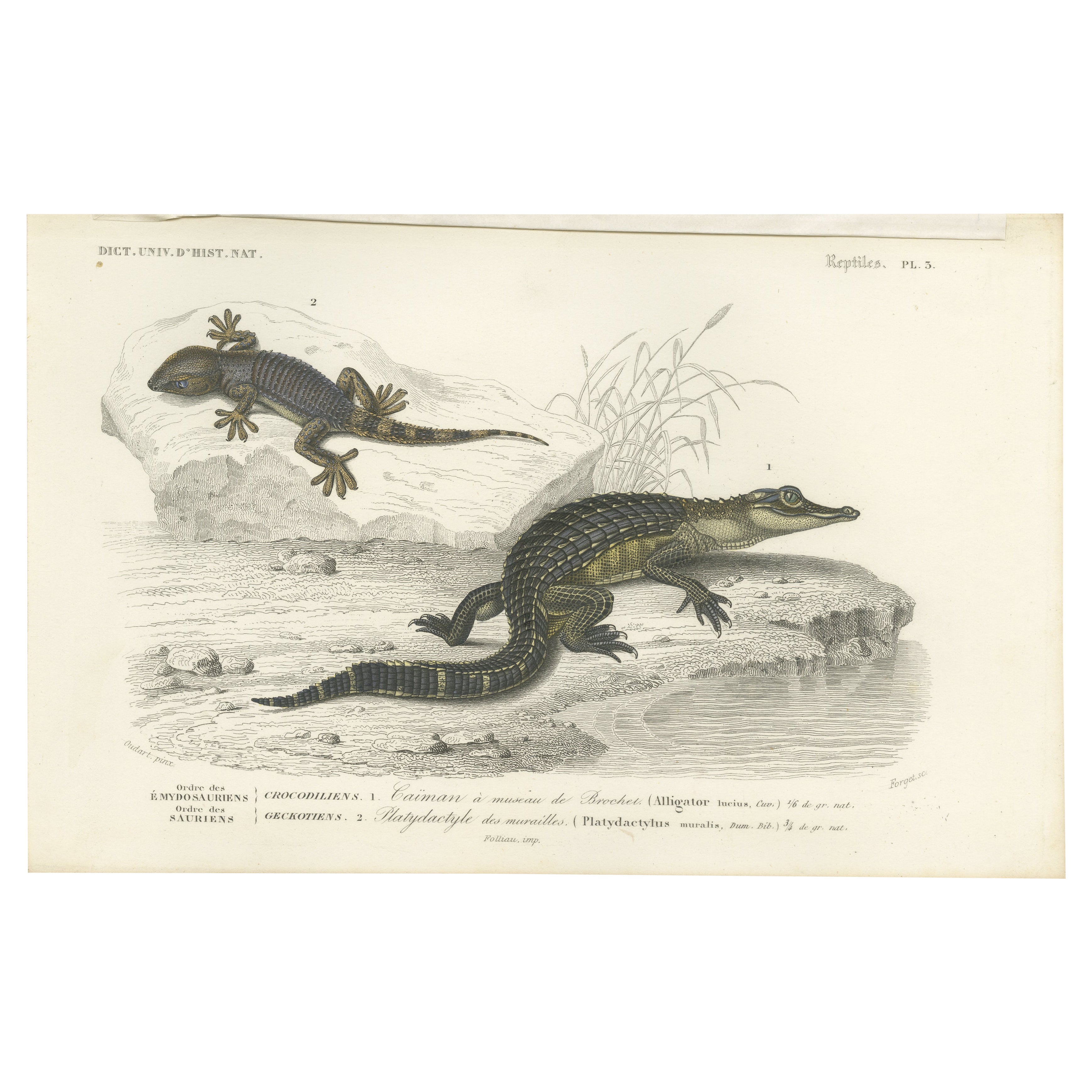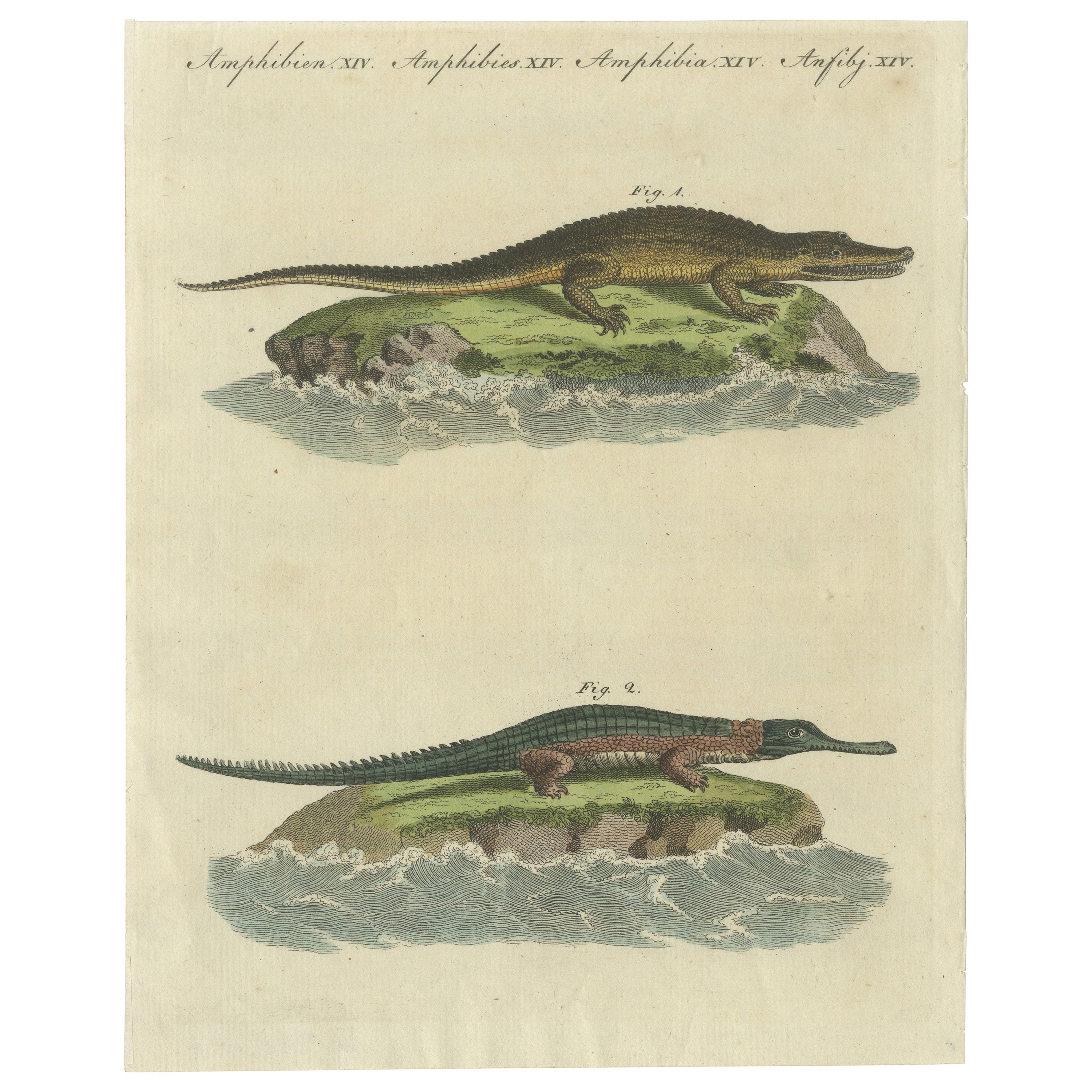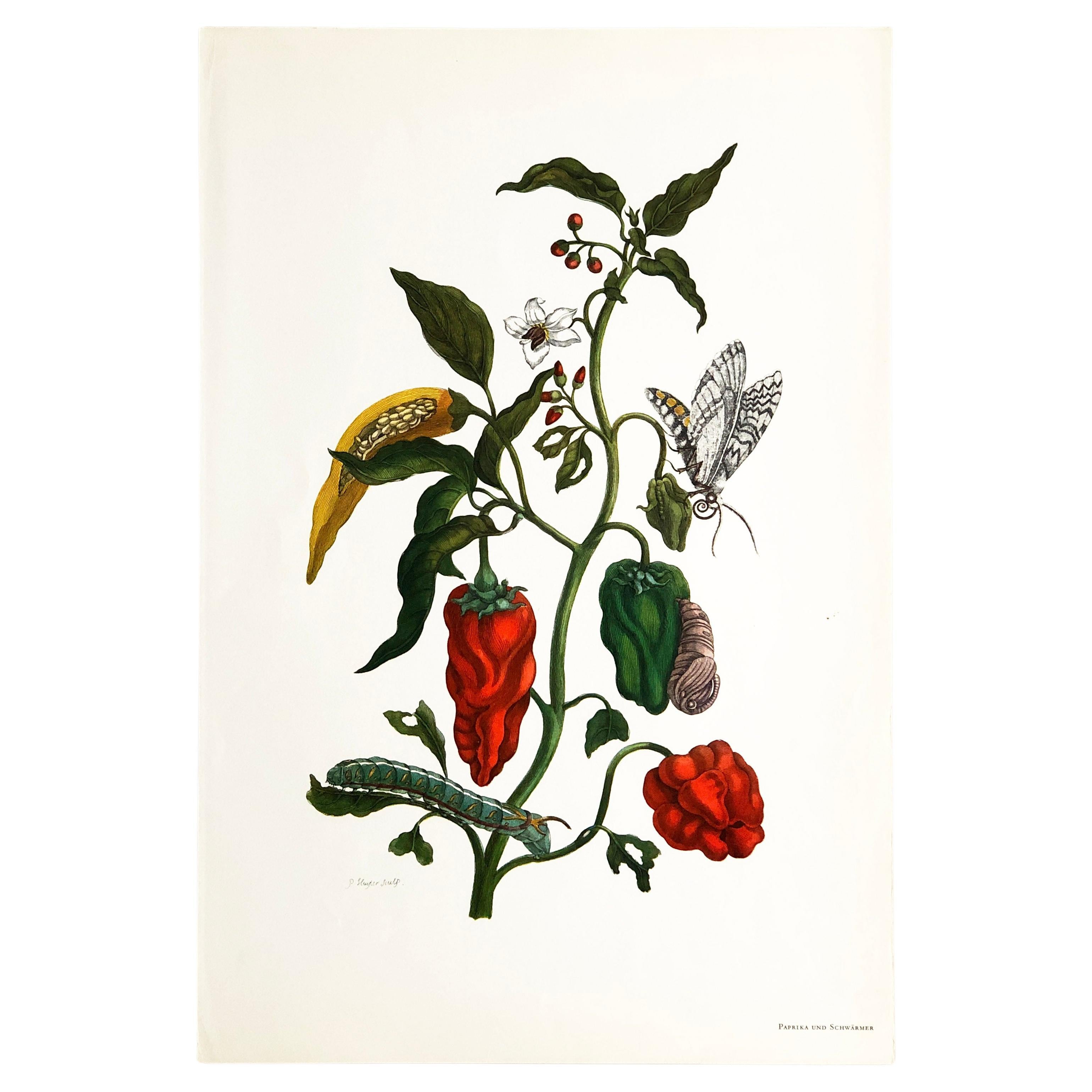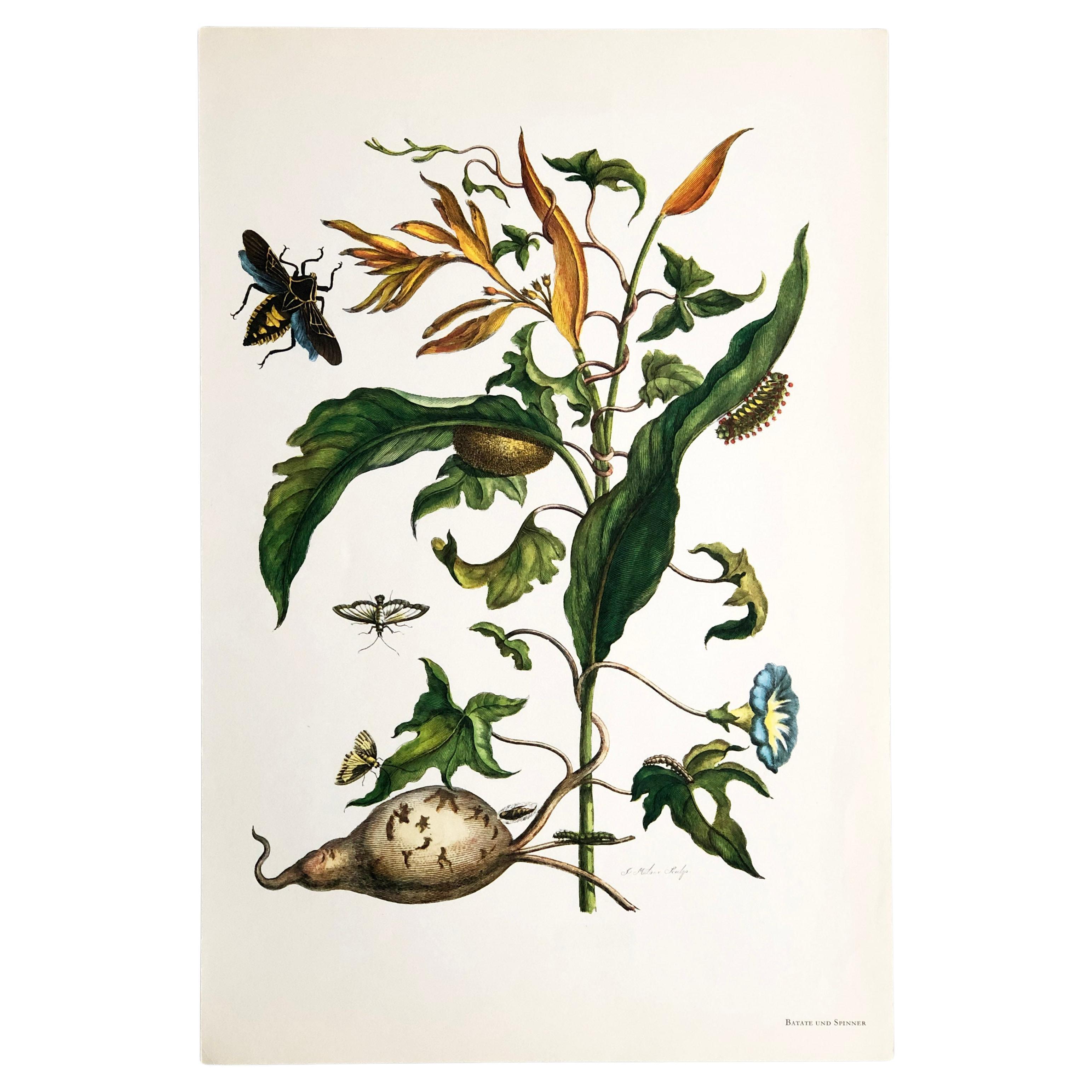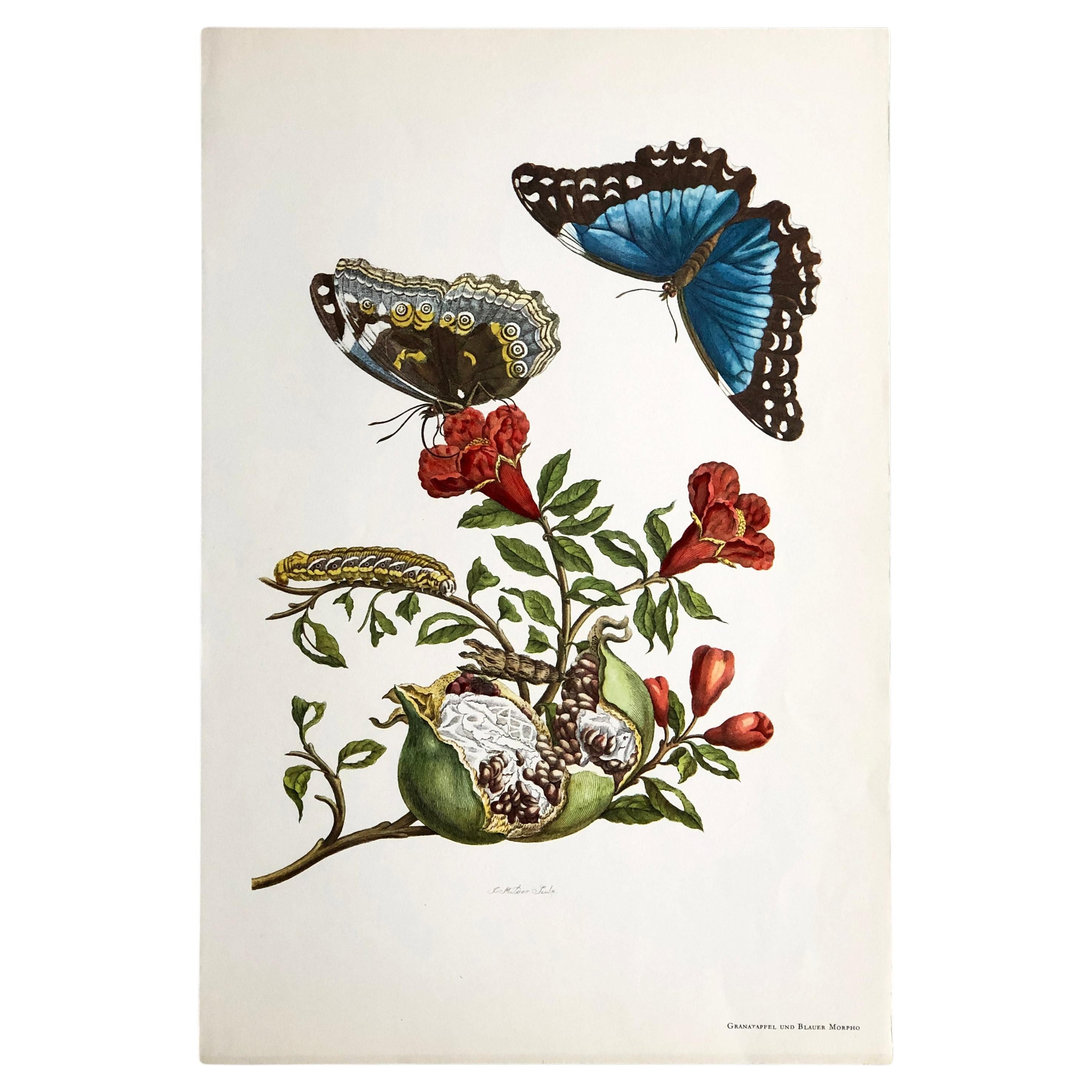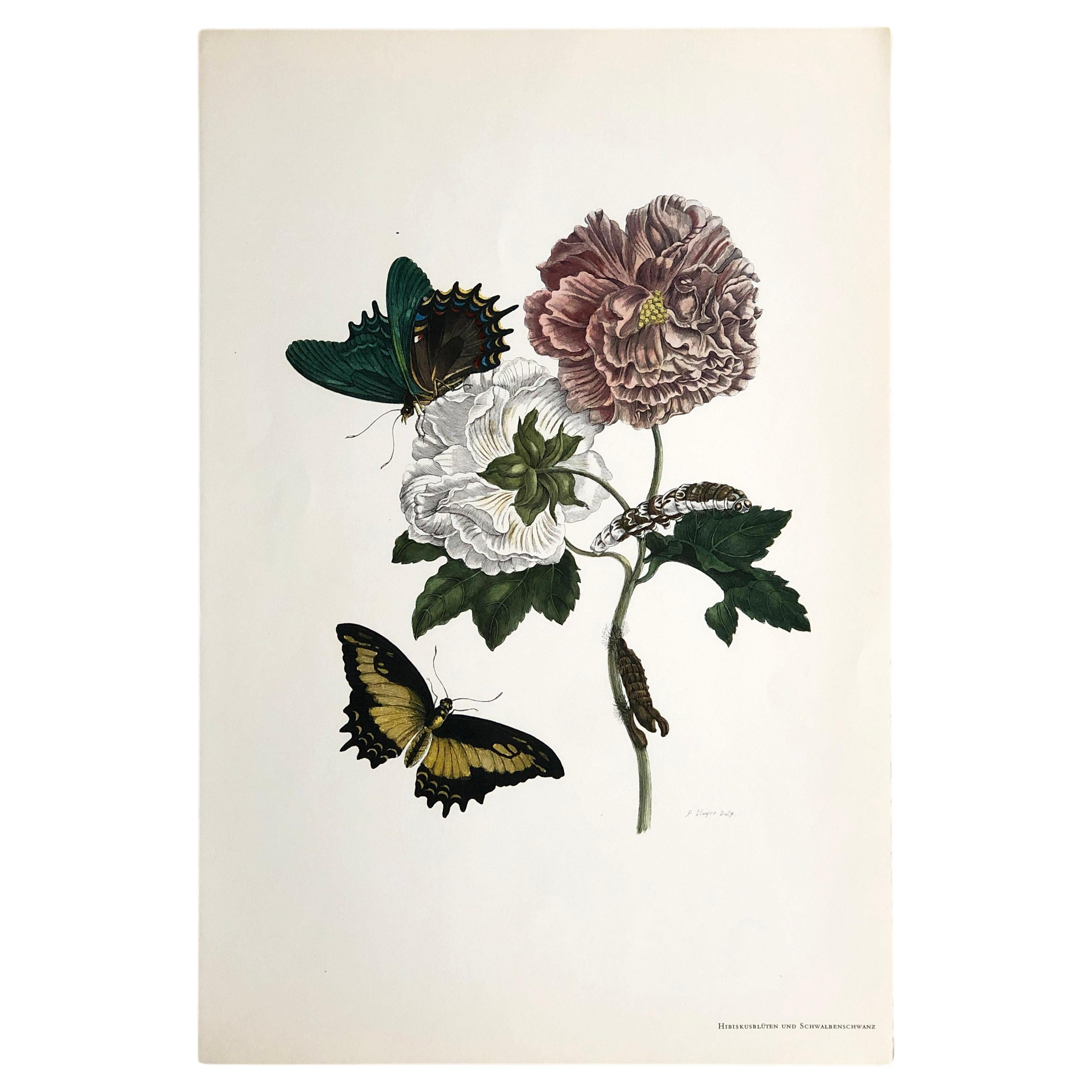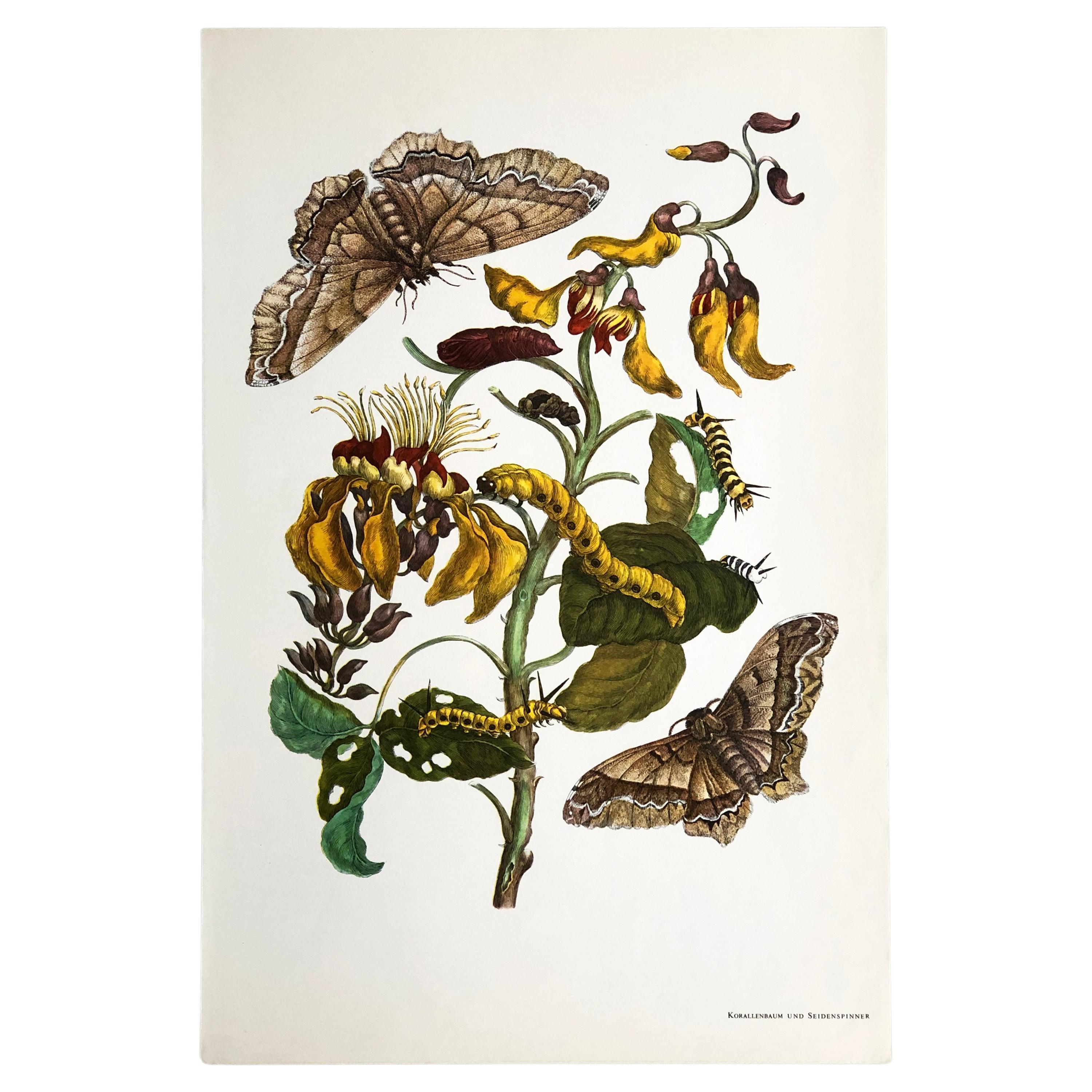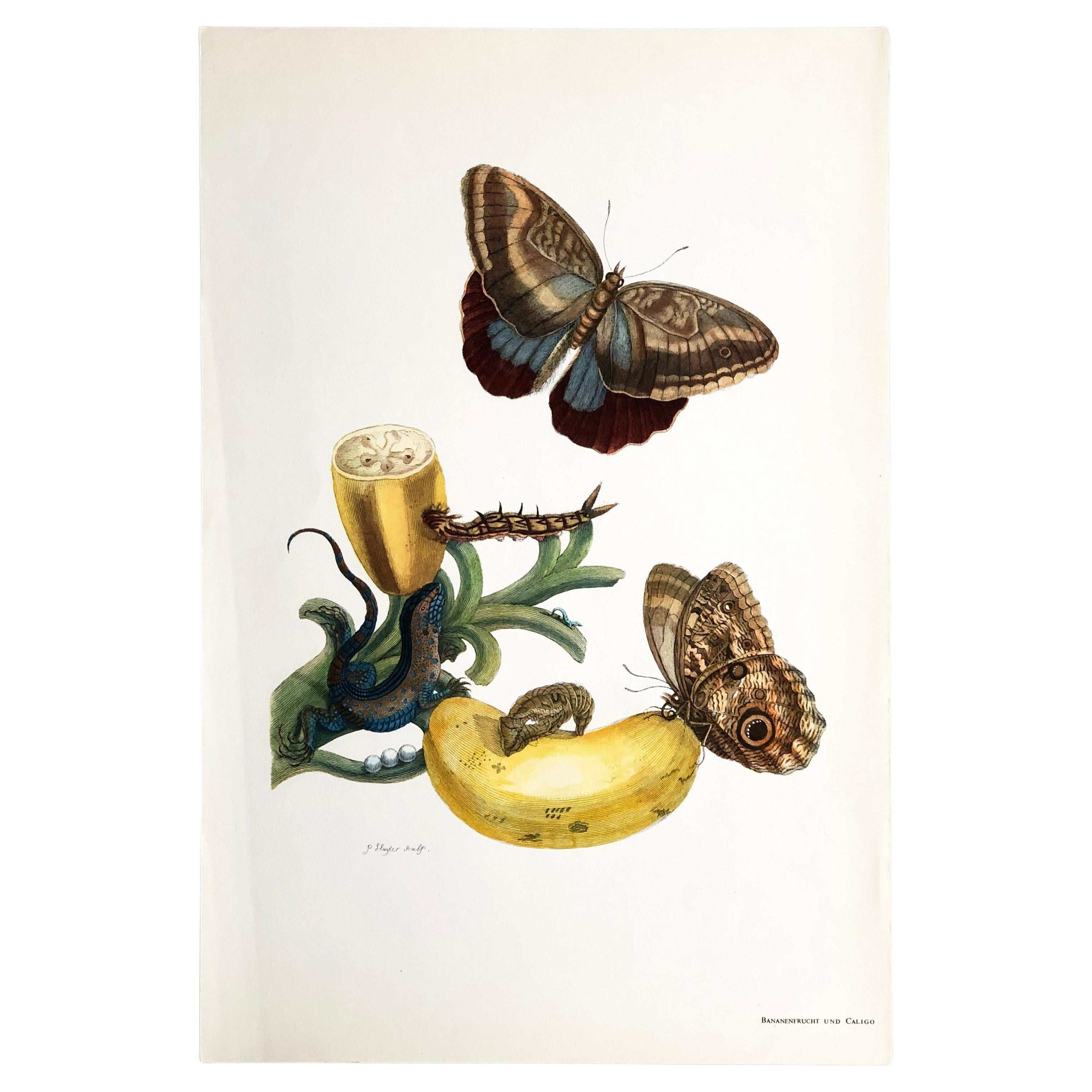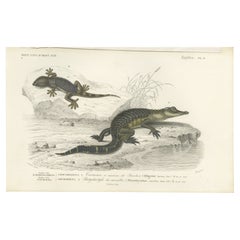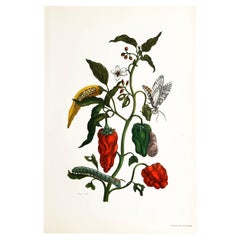
Caiman and Snake, 1719
View Similar Items
1 of 1
Caiman and Snake, 1719
About the Item
- Creator:Maria Sibylla Merian (Artist)
- Dimensions:Height: 13.5 in (34.29 cm)Width: 18.5 in (46.99 cm)Depth: 0.5 in (1.27 cm)
- Style:Other (In the Style Of)
- Place of Origin:
- Period:
- Date of Manufacture:1719
- Condition:
- Seller Location:Houston, TX
- Reference Number:1stDibs: LU129322912443
You May Also Like
- Antique Print of a Caiman and Common Wall GeckoLocated in Langweer, NLAntique print titled '1. Caïman à museau de Brochet, 2. Platydactyle des murailles'. Original old print of a caiman, an alligatorid belonging to the subfamily Caimaninae, one of two ...Category
Antique Mid-19th Century Prints
MaterialsPaper
$208 Sale Price20% Off - Antique Print of the Caiman Alligator and an other Crocodile speciesLocated in Langweer, NLOriginal antique print of the caiman alligator and an other crocodile species. This print originates from 'Bilderbuch fur Kinder' by F.J. Bertuch. Fri...Category
Antique Early 19th Century Prints
MaterialsPaper
- Maria Sibylla Merian - P. Sluyter - Peppers and Hawkmoths Nr. 55By Maria Sibylla MerianLocated in EINDHOVEN, NLFrom Metamorphosis Insectorum Surinamensium, first published 1705 Engravings by J. Mulder, P. Sluyter (Sluiter) and D. Stoopendaal after Maria Sybilla Merian. This plate is part of a comprehensive collection comprising 17 plates. Check out other listings to view the entire series. 1964 Hoffman and Campe Verlag, Hamburg Complete production Mladinska Knjiga, Ljubljana/Yugoslavia. This 1964 official reproduction table come from the editions: Dissertation sur la génération et les transformations des insectes de Surinam, The Hague, Pierre Gosse, 1726, and Over de Voortteeling en Wonderbaerlyke Veranderingen der Surinaamsche insects, Amsterdam, Jean Frederic Bernard, 1730. PEPPERS AND MOTIVES Paprika, from the night damage family, a gift from the New to the Old World, a pleasant one like tomatoes and potatoes, like corn and beans, not a dangerous one like tobacco. You can no longer imagine our, especially the Mediterranean cuisine of the pre-Columbian period, both received such enrichment from America, potatoes, corn, beans as substances, tomatoes and peppers as spices and flavors, foreign, from far away , adding a new dimension to our dishes. The pepper has become the strongest source of vitamins in our latitudes, an indispensable medicine in our often denatured food. The varieties we grow belong to the species Capsicum annuum, the plant drawn by the painter is Capsicum sinense, of which two or three fruit shapes and different stages of ripeness were combined on one branch. The ripe fruit bodies are visible on the eye of the tongue: anyone who looks at them will taste the peppery spiciness after a while. The leaf is a triangle, it thins from the lower broad solidity of the capsule area up to the lightness of the buds and flowers. Diversity also in the fact that the fruits are of different lengths, different colors, harmony between the dark green and red shapes, relief-like articulation of the pod surfaces. Butterfly, chrysalis and caterpillar cannot be precisely defined; they are hawkmoths from a group that counts seventy species in tropical America. A close relative of the strong-snouted Cocytius antarus - the pupa's beak is also noticeable here. (Original plate no. 55) ____________________________________ Maria Sibylla...Category
Antique 18th Century Dutch Other Prints
MaterialsPaper
- Maria Sibylla Merian - J. Mulder - Batate and spinners Nr. 41By Maria Sibylla MerianLocated in EINDHOVEN, NLFrom Metamorphosis Insectorum Surinamensium, first published 1705 Engravings by J. Mulder, P. Sluyter (Sluiter) and D. Stoopendaal after Maria Sybilla Merian. This plate is part of a comprehensive collection comprising 17 plates. Check out other listings to view the entire series. 1964 Hoffman and Campe Verlag, Hamburg Complete production Mladinska Knjiga, Ljubljana/Yugoslavia. This 1964 official reproduction table come from the editions: Dissertation sur la génération et les transformations des insectes de Surinam, The Hague, Pierre Gosse, 1726, and Over de Voortteeling en Wonderbaerlyke Veranderingen der Surinaamsche insects, Amsterdam, Jean Frederic Bernard, 1730. BATATE AND SPINNER A rich engraving, the diversity depicted is introduced by the unusual duality of the forage plants. The climbing plant with the blue morning glory flower and the underground tuber is in fact a convolvulaceae, the Ipomoea batatas, sweet potato or batate, which is widely grown in the tropics and subtropics. The yellow-flowered herb is a relative of bananas, a Heliconia, whose species could not be determined. The juxtaposition of the towering and twining growth, the lower, self-contracted tuber and the upper, bright, differentiated flower. A tropical bug flies towards the top left. At the top right is a spider caterpillar with a cocoon - an error on the part of the author that she let the bug emerge from the web. Below are two caterpillars, the pupa and two butterflies of a dioptid, a family of about five hundred similar species that inhabits America. Here too, definitions are only possible with anatomical examination, as the species imitate each other, predominantly with red-black markings. Maria Sibylla...Category
Antique 18th Century Dutch Other Prints
MaterialsPaper
- Maria Sibylla Merian - J. Mulder - Passionflower and insects Nr. 21By Maria Sibylla MerianLocated in EINDHOVEN, NLFrom Metamorphosis Insectorum Surinamensium, first published 1705 Engravings by J. Mulder, P. Sluyter (Sluiter) and D. Stoopendaal after Maria Sybilla Merian. This plate is part of a comprehensive collection comprising 17 plates. Check out other listings to view the entire series. 1964 Hoffman and Campe Verlag, Hamburg Complete production Mladinska Knjiga, Ljubljana/Yugoslavia. This 1964 official reproduction table come from the editions: Dissertation sur la génération et les transformations des insectes de Surinam, The Hague, Pierre Gosse, 1726, and Over de Voortteeling en Wonderbaerlyke Veranderingen der Surinaamsche insects, Amsterdam, Jean Frederic Bernard, 1730. PASSION FLOWER AND INSECTS A leaf filled with life, a small cosmos, a square without a blank space, once again the dominance of the plant, Passiflora laurifolia, i.e. bay leaf passionflower, from the Passifloraceae family, beautiful the open flower that shines into the sun. As the English names Yellow Granadine and Jamaica Honeysuckle suggest, the juice of the fruit is made into drinks; the taste is so pleasant that the plant, which comes from America, has spread throughout the tropics. The author praises the pleasant, widely noticeable scent. On the stem at the bottom right and in the middle on the left are two colorful bugs, just like these rhynchotes, which we despise, make magnificent creatures in the tropics. The butterfly on the right is no more definable than all the caterpillars and pupae shown here. Two caterpillar sacks, houses of sack carriers, are shown. The caterpillars build this shell out of webs, stones, pieces of leaves and stems and carry it around with them like a hermit crab does its snail shell. When they want to move or eat, they leave it with only their front part and pull By closing the opening, they retreat inside in case of danger. (Original plate no. 21) ____________________________________ Maria Sibylla...Category
Antique 18th Century Dutch Other Prints
MaterialsPaper
- Maria Sibylla Merian - J. Mulder - Batate and spinners Nr.41By Maria Sibylla MerianLocated in EINDHOVEN, NLFrom Metamorphosis Insectorum Surinamensium, first published 1705 Engravings by J. Mulder, P. Sluyter (Sluiter) and D. Stoopenda...Category
Antique 18th Century Dutch Other Prints
MaterialsPaper
Recently Viewed
View AllMore Ways To Browse
China Cabinet With Glass
Antique Chinese Carved Cabinet
Antique Carved China Cabinet
Antique Country Kitchen Cabinets
Industrial Vintage Storage Drawers
Italian Inlayed Wood Cabinet
Commodes From Italy
Hanging Wall Cabinet
Small Wood Cabinet With Glass
Antique Cabinet Blue
Antique Chinese Shelves
Mid Century Danish Teak Chest
Japanese Vintage Sign
19th Century Mahogany Corner Cabinet
Small Mid Century Modern Chests
Vintage Chest Of 3 Drawers
European Pine Antique Furniture
Louis Xv Commode With Marble Top
